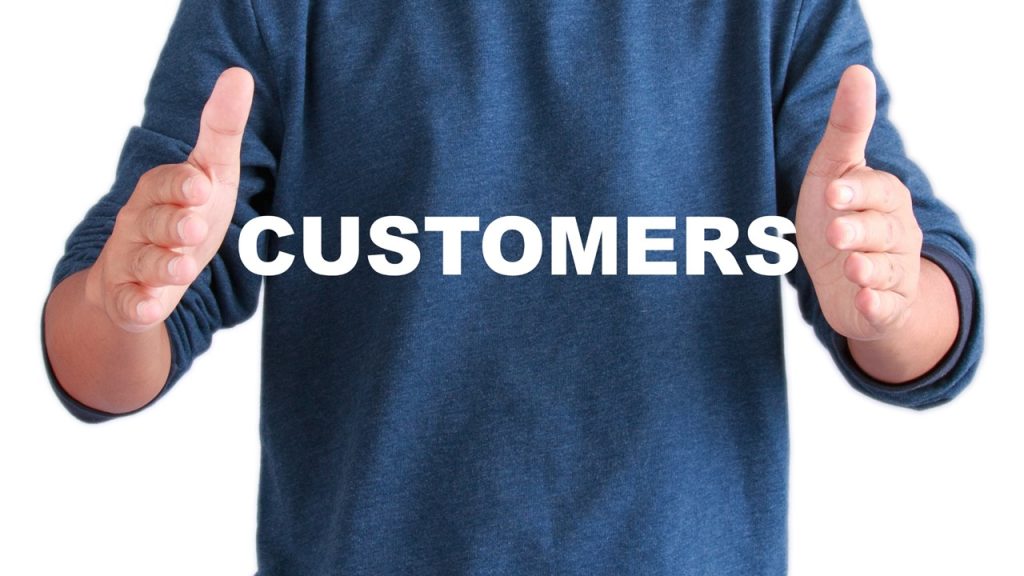
Leadership plays a crucial role in ensuring that client churn is minimized or eliminated in B2B organizations. Here are some ways that leadership can drive this effort:
- Establish a customer-focused culture: Leaders should create a culture that prioritizes customer satisfaction and success, encouraging employees to put the customer at the center of all decision making.
- Invest in customer service: Leaders should ensure that the organization has the resources and tools necessary to provide excellent customer service, including a knowledgeable and responsive support team.
- Foster open communication: Leaders should foster open communication with customers, regularly seeking feedback and proactively addressing any issues that arise.
- Encourage continuous improvement: Leaders should encourage a continuous improvement mindset, encouraging teams to continuously seek out ways to enhance the customer experience and reduce churn.
- Empower employees: Leaders should empower employees to make decisions and take action to address customer needs, ensuring that they have the resources and support they need to succeed.
- Analyze and act on customer data: Leaders should regularly analyze customer data to identify trends and insights, and take action to address any issues that arise.
- Lead by example: Finally, leaders need to lead by example, demonstrating a strong commitment to customer success and continuous improvement.
Free Download
Download your copy of customer churn & retention management report
Our research is to understand the best practices among enterprises across sectors in Indian region and suggest Customer Churn & Retention Management as a concept in its infancy, barring few sectors that experience high churn, such as Telecom. At a time when the revenue growth by customer acquisition is stalling, many sectors are unprepared to handle this challenge with scientific and proven methods.

By taking a proactive and customer-focused approach, B2B organizations can ensure that client churn is minimized or eliminated, setting the stage for long-term success and growth.
#nilakantasrinivasan-j #canopus-business-management-group #B2B-client-centric-growth

Improving and sustaining higher sales win rate in B2B organizations requires a combination of technical skills, business acumen, and interpersonal skills. Here are some specific skills and capabilities that are critical for employees to drive this effort:
- Market and customer knowledge: Employees need to have a deep understanding of their target market and customers, including their needs, challenges, and buying process.
- Product knowledge: Employees need to have a deep understanding of the products or services they are selling, including their features, benefits, and competitive differentiation.
- Sales process expertise: Employees need to have a thorough understanding of the sales process, including lead generation, qualification, and closing techniques, and be able to execute it effectively.
- Communication skills: Employees need to have excellent communication skills, including the ability to effectively present products and services, negotiate with customers, and handle objections.
- Solution selling skills: Employees need to be able to understand customer needs and challenges, and develop and present solutions that meet those needs effectively.
- Strategic thinking: Employees need to be able to think strategically about their sales efforts, considering market conditions, competitive landscape, and customer needs, to develop a winning approach.
- Resilience: Employees need to be resilient, able to handle rejection and keep moving forward in the face of setbacks, in order to achieve their sales goals.
By developing these skills and capabilities, employees can help B2B organizations improve and sustain higher sales win rates, setting the stage for long-term success and growth.
#nilakantasrinivasan-j #canopus-business-management-group #B2B-client-centric-growth

B2B organizations can suffer from high client churn for a variety of reasons. Some common reasons include:
- Lack of differentiation: When B2B organizations offer similar products or services as their competitors, it can be difficult to retain customers and prevent them from switching to a competitor.
- Poor customer experience: B2B organizations may struggle to provide a seamless and positive customer experience, leading to frustration and a high churn rate.
- Inadequate customer service: Poor customer service, such as slow response times and a lack of proactive support, can result in dissatisfaction and a high churn rate.
- Unmet customer needs: When B2B organizations fail to understand and meet the evolving needs of their customers, it can lead to a lack of satisfaction and a high churn rate.
- Price and value mismatch: If customers feel that the price of a product or service is not aligned with its value, they may be more likely to switch to a competitor.
- Competition: Increased competition in the market can make it easier for customers to switch to a competitor, leading to a higher churn rate.
- Changes in the customer’s business: Changes in a customer’s business, such as mergers and acquisitions or shifts in their product offerings, can lead to a change in their needs and a decision to switch to a competitor.
By understanding these factors and taking proactive steps to address them, B2B organizations can reduce client churn and drive sustainable growth.
#nilakantasrinivasan-j #canopus-business-management-group #B2B-client-centric-growth

Some popular client centric strategies in B2C include:
- Personalization: Personalization means tailoring the customer experience to the individual’s preferences and needs. This can be done through targeted marketing campaigns, personalized product recommendations, or customized services. For example, Netflix uses customer data to recommend personalized TV shows and movies, Amazon uses customer data to recommend personalized products, and Spotify uses customer data to create personalized playlists.
- Empowering the customer: This strategy involves giving customers control over their experience by providing them with the information and tools they need to make informed decisions. This can be done through online self-service portals, chatbots, or mobile apps. For example, airlines like Delta and United provide customers with mobile apps that allow them to check-in, choose seats, and track their flight status.
- Listening to feedback: This strategy involves actively seeking and responding to customer feedback. This can be done through surveys, focus groups, or social media monitoring. For example, Zappos encourages customers to leave reviews on their website, and Starbucks has a mobile app that allows customers to provide feedback and track their rewards.
- Providing excellent customer service: This strategy involves providing prompt, helpful, and friendly service to customers. This can be done through a dedicated customer service team, or by providing customers with easy access to information and support. For example, Nordstrom is known for its exceptional customer service, and Apple has a dedicated support team that provides customers with assistance over the phone or online.
- Creating a sense of community: This strategy involves building a sense of community among customers by creating a shared experience or shared values. This can be done through social media, customer events, or loyalty programs. For example, Nike creates a sense of community by hosting running events and creating social media campaigns that encourage customers to share their athletic achievements.
Free Download
Download your copy of a research report on B2B customer experience practices in India.
Our research is to understand the best practices amongst the enterprises across various sectors in Indian region when it comes to Customer Experience Transformation. Customer Experience as a concept is generally not given the required attention is B2B sector. With increase in the competition in the market, customer experience is one of the major thing which defines the performance of the organization.

B2B companies can also benefit from implementing customer-centric strategies. Some client-centric strategies that work well for B2B companies include:
- Building long-term relationships: This strategy involves building a strong, long-term relationship with clients by understanding their business needs and goals, and providing them with tailored solutions. This can be done through regular communication, account management, and customer service. For example, a software company might provide a dedicated account manager for a large enterprise client, and work closely with them to understand their specific needs and goals.
- Providing value-added services: This strategy involves providing additional services that go beyond the core product or service offered. This can include training, consulting, or support services. For example, a manufacturing company might provide training for the maintenance and repair of their equipment to their clients.
- Offering customized pricing and contract options: This strategy involves offering customized pricing and contract options to clients based on their specific needs and budget. This can be done through volume discounts, flexible payment terms, or customized service plans. For example, a consulting firm might offer a discounted rate to a client who signs a long-term contract.
- Focusing on the client’s success: This strategy involves making the client’s success a priority, and aligning the company’s goals with the client’s goals. This can be done through regular communication, performance metrics, and regular reviews. For example, a digital marketing agency might track and report on the performance of a client’s online campaigns and make adjustments as needed to improve results.
- Anticipating client’s needs: This strategy involves anticipating the client’s needs, and proactively providing solutions. This can be done through regular communication, account management, and market research. For example, a logistics company might conduct regular surveys with clients to understand their evolving needs and then develop new solutions to meet those needs.
All of these strategies help B2B companies to understand and meet the specific needs of their clients, which leads to increased client satisfaction, loyalty, and long-term business relationships, all of which are essential for sustainable growth.
#nilakantasrinivasan-j #canopus-business-management-group #B2B-client-centric-growth

A widely accepted sustainable growth strategies that work well are building a strong brand and reputation. This can be done by providing high-quality products or services, excellent customer service, and consistently delivering on promises. Building a strong brand and reputation will attract new customers through word-of-mouth and positive reviews, and also retain existing customers by creating a sense of trust and loyalty. But to build trust and loyalty companies need good quality products and superior customer experience. So implementing this strategy may not be very easy.
On the other hand, Customer centricity can be considered a sustainable growth strategy. Customer centricity is the approach of putting the customer at the center of all business decisions and actions. This approach helps to create a positive customer experience, which can lead to increased customer satisfaction, loyalty, and advocacy.
When a company puts the customer first and prioritizes their needs, it can help to build trust and a positive reputation. This can lead to increased customer retention, repeat business, and positive word-of-mouth, which are all essential for sustainable growth. By understanding the needs and wants of their customers, a company can also innovate and create products and services that meet those needs, which can lead to increased sales and revenue growth.
Additionally, a customer-centric approach can also help a company to better understand and segment their customer base, which can be used to create targeted marketing campaigns and increase the effectiveness of sales and distribution efforts.
So, Customer centricity is a sustainable growth strategy because it helps to create a positive customer experience, builds trust and reputation, increases customer retention, and helps a company to better understand and target their customer base, all of which are essential for long-term growth. So, Client centricity or customer centricity in turn builds brand and reputation.
Free Assessment
This diagnostic tool will provide you customized report with our recommendations immediately.
Are you a B2B leader who is unsure about how to achieve SUSTAINABLE business growth and do you want to have predictable and consistent growth in your organization?
Then take this quick self-assessment diagnostic and you will have an idea of what your priorities should be?
This simple yet powerful FREE assessment is to evaluate your company’s sustainable growth potential.
- You will have to answer 20 questions that relates to your company.
- You will immediately get a customized growth diagnostic report called Sustainable Business Growth Assessment that includes insights and our recommendations
- This report will be delivered on browser & by email
Take the Free Assessment Now. It won’t take 15 mins.
Another effective sustainable growth strategy is building a strong distribution network. This includes developing partnerships with other businesses, distributors, and retailers to expand the reach of products or services. Building a strong distribution network allows a business to reach new markets and customers without the need for significant additional investment.
Another key element of sustainable growth strategy is diversifying the revenue stream. This can be achieved by introducing new products or services, or expanding into new markets. Diversifying the revenue stream helps to mitigate the risks associated with relying on a single product or service, and also opens up new opportunities for growth.
Finally, investing in research and development (R&D) is an important aspect of sustainable growth strategy. This can help a business stay ahead of the competition by continuously improving existing products or services, and also developing new ones. Investing in R&D can also lead to the creation of new markets or the discovery of new ways to reach existing markets.
All of these strategies work well together to create a solid foundation for long-term growth, by making customer or client centricity a way of life, by creating a strong brand and reputation, building a strong distribution network, diversifying revenue streams, and investing in research and development.
#nilakantasrinivasan-j #canopus-business-management-group #B2B-client-centric-growth

B2B organizations can struggle with poor account growth for a variety of reasons. Some common reasons include:
- Lack of differentiation: Many B2B organizations offer similar products or services, making it difficult for them to stand out from their competitors.
- Poor target market understanding: Without a deep understanding of their target market, B2B organizations can miss key opportunities for growth and struggle to connect with potential customers.
- Inadequate sales and marketing strategies: A poorly executed sales and marketing strategy can result in a lack of lead generation and low conversion rates, hindering account growth.
- Ineffective account management: Poor account management can lead to missed opportunities for upselling and cross-selling, resulting in slow account growth.
- Resistance to change: B2B organizations may struggle to keep pace with changes in the market or adopt new technologies, leading to a lack of innovation and growth.
- Limited resources: Smaller B2B organizations may lack the resources necessary to invest in growth-oriented initiatives, such as sales and marketing efforts.
- Inadequate customer service: Poor customer service can lead to high churn rates and a lack of customer referrals, making it difficult to drive account growth.
Overall, B2B organizations need to have a clear understanding of their target market, a strong sales and marketing strategy, effective account management practices, and a willingness to embrace change in order to drive account growth.
#nilakantasrinivasan-j #canopus-business-management-group #B2B-client-centric-growth

Leadership plays a crucial role in ensuring consistent B2B account growth. A strong and visionary leadership team can create a culture that fosters growth, innovation, and customer success. Here are some ways that leadership can drive B2B account growth:
- Establish a clear vision and strategy: Leaders need to define a clear vision and strategy for growth, including specific goals and metrics for success.
- Foster a customer-focused culture: Leaders should encourage a customer-focused culture that prioritizes customer satisfaction and drives customer loyalty, which is essential for consistent account growth.
- Invest in sales and marketing: Leaders need to ensure that the organization has the resources and tools necessary to drive lead generation and convert leads into customers.
- Foster innovation: Leaders should foster a culture of innovation and experimentation, encouraging teams to test new ideas and approaches that can drive growth.
- Embrace technology: Leaders need to embrace new technologies and tools that can improve sales and marketing efforts, streamline processes, and drive growth.
- Develop strong partnerships: Leaders should develop strong partnerships with key stakeholders, such as suppliers, customers, and industry groups, to drive growth through collaboration and referral business.
- Lead by example: Finally, leaders need to lead by example, demonstrating a strong commitment to growth, customer success, and continuous improvement.
By establishing a strong leadership foundation, B2B organizations can ensure consistent account growth and set themselves up for long-term success.
#nilakantasrinivasan-j #canopus-business-management-group #B2B-client-centric-growth

There are several reasons why B2B organizations may end up with low EBITDA margins (Earnings Before Interest, Taxes, Depreciation, and Amortization), including:
- Increased Competition: Increased competition can put pressure on pricing and margins, making it difficult for B2B organizations to maintain high levels of profitability.
- Rising Costs: The cost of doing business, such as labor costs, raw materials, and overhead expenses, can increase over time. If these costs are not properly managed, they can reduce profitability and lead to low EBITDA margins.
- Inefficiencies in Operations: Inefficiencies in operations, such as bottlenecks in production processes, lack of automation, and insufficient inventory management, can increase costs and reduce profitability.
- Poor Pricing Strategy: B2B organizations that do not have a clear pricing strategy or do not regularly review and adjust their pricing to reflect changes in the market, can struggle to achieve high margins.
- Undersized Sales Team: An undersized sales team can result in missed sales opportunities, which can negatively impact profitability.
- Lack of Innovation: B2B organizations that fail to keep up with changing market demands and technological advancements can struggle to maintain high levels of profitability.
- Weak Cost Control: Poor cost control can result in the mismanagement of resources, leading to higher costs and lower margins.
In conclusion, low EBITDA margins in B2B organizations can be caused by a combination of factors, including increased competition, rising costs, inefficiencies in operations, poor pricing strategies, an undersized sales team, lack of innovation, and weak cost control. By addressing these challenges, B2B organizations can improve their profitability and achieve sustained success.
#nilakantasrinivasan-j #canopus-business-management-group #B2B-client-centric-growth

To improve EBITDA margins in B2B companies, employees should develop the following skills and capabilities:
- Cost Analysis: Employees should have the skills and knowledge to analyze costs and identify areas where they can be reduced. This may involve using data analytics, process mapping, and other techniques to identify inefficiencies and opportunities for cost savings.
- Pricing Strategy: Employees should have a strong understanding of pricing strategies, including how to set prices based on market conditions, customer demand, and the organization’s cost structure.
- Technology and Innovation: Employees should have the ability to stay up-to-date with the latest technologies and trends, and be able to identify opportunities for using technology to improve efficiency and reduce costs.
- Sales and Marketing: Employees involved in sales and marketing should have a deep understanding of the products and services they are selling, as well as the needs and motivations of customers. This knowledge can be leveraged to develop effective sales strategies and increase revenue.
- Continuous Improvement: Employees should have a strong commitment to continuous improvement and be able to identify and implement new ways to increase efficiency and reduce costs. This may involve using data analytics, process improvement methodologies, or other techniques to identify and resolve issues.
- Collaboration and Partnership Building: Employees should have the ability to collaborate effectively with partners, suppliers, and customers to identify opportunities for joint cost savings and revenue growth. This may involve negotiating favorable terms, sharing information and resources, or developing new business models.
In conclusion, developing these skills and capabilities in employees can help B2B organizations improve their EBITDA margins by reducing costs, increasing efficiency, and growing revenue. This can be achieved through a combination of training, coaching, and development programs, as well as a strong focus on continuous improvement and collaboration.
#nilakantasrinivasan-j #canopus-business-management-group #B2B-client-centric-growth

Client centricity plays an important role in improving low EBITDA margins in the B2B sector. When organizations focus on their clients and put their needs at the center of their business strategies, they are able to increase customer satisfaction, improve client retention, and drive revenue growth. This, in turn, can lead to improved EBITDA margins.
Here are some ways in which client centricity can help improve low EBITDA margins in B2B organizations:
- Increased Customer Satisfaction: By putting the needs of their clients first, organizations can increase customer satisfaction and build stronger, more meaningful relationships with their clients. This can result in increased client retention and reduced churn, which can lead to improved EBITDA margins.
- Better Understanding of Customer Needs: When organizations focus on their clients, they gain a deeper understanding of their needs, preferences, and pain points. This knowledge can be used to inform product and service development, as well as pricing and sales strategies, leading to increased revenue and improved margins.
- Improved Client Retention: Client centricity can help organizations build stronger relationships with their clients, leading to improved client retention. When clients are satisfied with the products and services they receive, they are less likely to switch to competitors, which can result in improved EBITDA margins.
- Increased Revenue: By focusing on their clients, organizations can increase their ability to sell more products and services, and drive revenue growth. This, in turn, can improve EBITDA margins by increasing the top-line while reducing costs.
Free Download
Download free customer experience self-assessment check sheet that is useful before commencing client centricity journey in your organization.
This self-assessment check-sheet will help you to quickly evaluate your Customer Experience program and learn about areas that need improvement. This is a qualitative assessment. Hence you should take an unbiased view during evaluation. There are 2 parts in this assessment. First contains 16 questions and you can evaluate where your organization stands in each of those areas. Second part contains, ideally expected responses which can be used for comparison.

In conclusion, client centricity is an essential component of improving low EBITDA margins in the B2B sector. By putting the needs of their clients first and building strong, meaningful relationships, organizations can increase customer satisfaction, improve client retention, and drive revenue growth, leading to improved EBITDA margins.
#nilakantasrinivasan-j #canopus-business-management-group #B2B-client-centric-growth
Sign-up for collaborat newsletter
